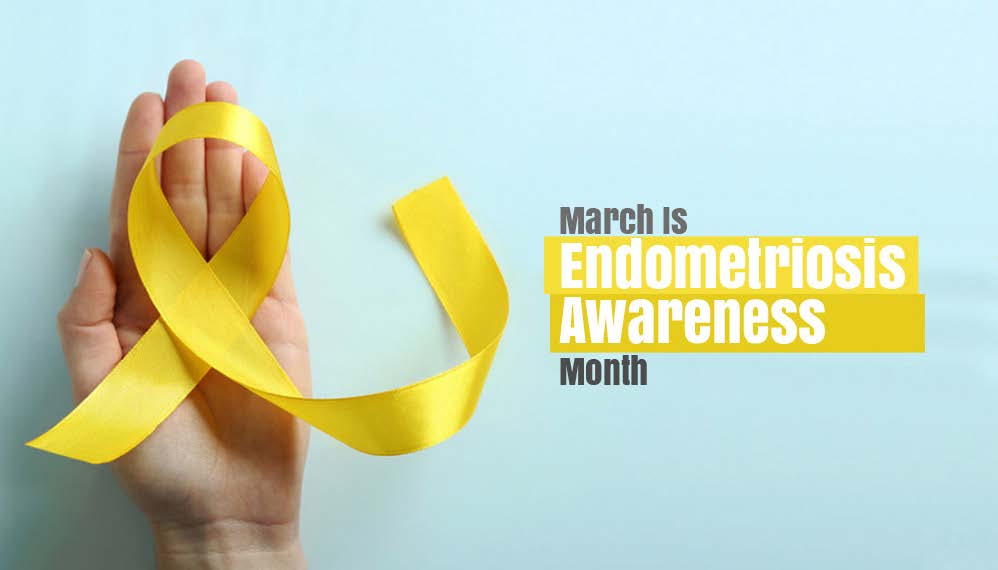Endometriosis is a painful, chronic disease that affects at least 6.3 million women and girls in
the U.S., 1 million in Canada, and millions more worldwide. It occurs when tissue like that
which lines the uterus (tissue called the endometrium) is found outside the uterus — usually in
the abdomen on the ovaries, fallopian tubes, and ligaments that support the uterus; the outer
surface of the uterus; and the lining of the pelvic cavity.
This misplaced tissue develops into growths or lesions which respond to the menstrual cycle
in the same way that the tissue of the uterine lining does: each month the tissue builds up,
breaks down, and sheds. Menstrual blood flows from the uterus and out of the body, but the
blood and tissue shed from endometrial growths have no way of leaving the body. This results
in internal bleeding, a breakdown of the blood and tissue from the lesions, and inflammation —
and can cause pain, infertility, scar tissue formation, adhesions, and bowel problems.
What are the Symptoms of Endometriosis?
• Pain before and during periods
• Infertility
• Fatigue
• Painful urination during periods
• Painful bowel movements during periods
• Other Gastrointestinal upsets such as diarrhea, constipation, nausea.
• In addition, many women with endometriosis suffer from:
• Allergies
• Chemical sensitivities
• Frequent yeast infections
Although there is no cure for endometriosis, a variety of treatment options exist. Goals may
include: relieving/reducing pain symptoms, shrinking or slowing endometrial growths,
preserving or restoring fertility, and preventing/delaying recurrence of the disease.

